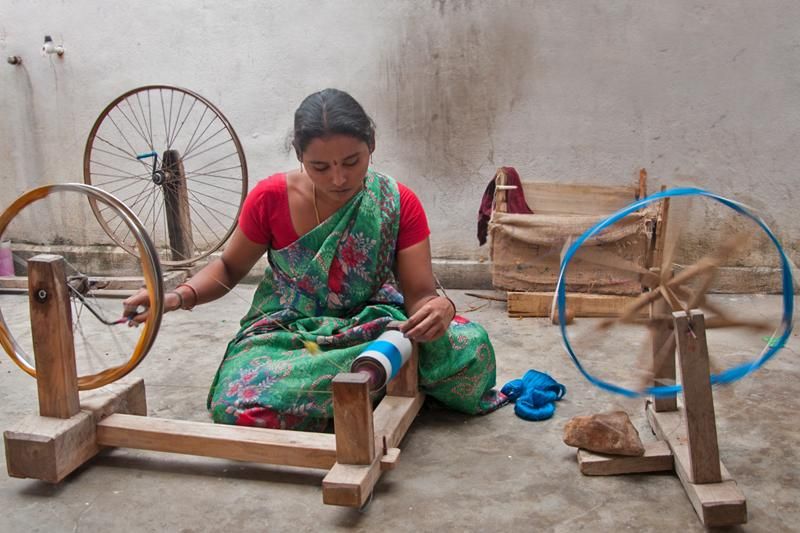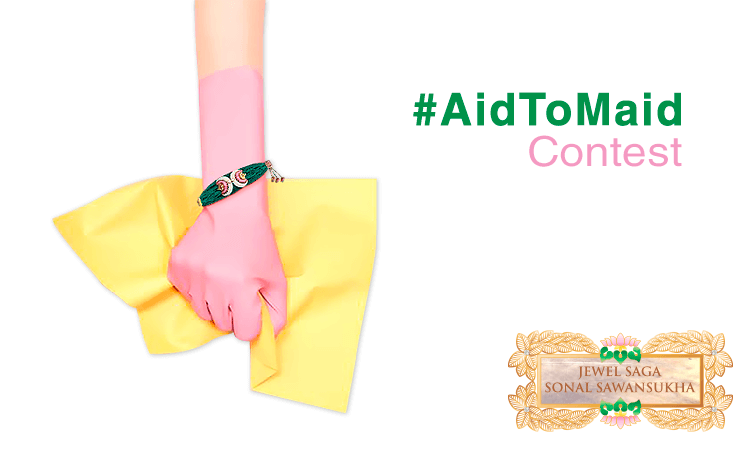Harshada Tells Us Why She Had Grandmothers On R&D Team Of Happibo Baby Meals
- IWB Post
- October 21, 2017

“Sometimes, mothers say and do things that seem like they don’t want their kids … but when you look more closely, you realize that they’re doing those kids a favor. They’re just trying to give them a better life.”
―Jodi Picoult, Handle with Care
Harshada Joshi is a mother who took this sentiment a notch higher by deciding to not only give her son a better life but thousands of other children, too. She is the founder of Happibo, a venture that delivers ready-to-feed meals crafted in favor of the health of children. She is breaking many notions on her entrepreneurial journey. Firstly, she started her company right after having her child, and secondly, she is giving a new outlook to packaged foods.
Children seem to be lovely and innocent until the time they are to be fed. Then starts a game of tantrums with loud cries deafening everyone in the house. Harshada offers the perfect solution with the food that is not only tasty but packed with nutrients. Being a mother, she knows what is good and what is bad for the child. She shares with us how she stumbled upon entrepreneurship and also a recipe to satisfy our taste buds.
Packed meals are usually a not preferred option, how are you changing that with Happibo?
It’s all about convenience. Mothers are getting busier by the day, so healthy packed food can be a solution. If you ask what is different, Happibo is preservatives and additives free. Typically, companies try to cut corners and use cheaper technology, so preservatives become mandatory. If you see outside India, many companies are practicing healthy packaging, we have partnered with a UK based company to enhance our technology.
You often go to deliver orders yourself. How is the experience?
As much as I would like, I can’t do it all the time, but I try. I like doing it because my customers get to see the face behind the project. When they see me, they understand that I am just like them and trust is being built. Their feedback is very valuable. There is a connection that I try to establish, but it is not scalable always.
Tell us a feedback story that always cheers you up.
When I just started, I gave out mothers a few samples to try and asked them for their feedback. The first mother I called was so happy because her son started eating spinach. She couldn’t believe it. A few days back a mother told me how happy her children are to eat the food I deliver. She said when she makes the same dishes they never are willing to even taste it.
Harshada sounded really excited. Not everything can be expressed in words, but her happy vibes were infectious.
You often say I never tried to be an entrepreneur, but the child gives you perspective. We want to know more.
I was just an ordinary employee of a company and never aspired to run a business. But then I had my child, and it was so difficult without much help, especially maintaining good food habits. Mothers are at work, and most of the time everyone ends up eating outside. I realized everyone wants to do something, but they don’t know how.
The reason I became an entrepreneur was to change the way people feed their children and make mothers realize the importance of healthy food. It’s important to raise your child in a certain way that will latch on to them in their future.
Starting a startup at 35, tell us what did it feel like?
At 35, you are at a stage where you have proved yourself in your career. Thankfully, I didn’t have to worry about money when I left my job because of my husband’s support. I now have an opportunity to do what I love. I did go back to work after my son was born but it didn’t feel like I was making any impact. And, then I had this idea that could make a difference.
It must have been tough for you to venture into this business while nursing your child?
Totally. But my son is very helpful, though. He did whatever I asked him to do. Now he’s four years old and tells me what recipes will work and what won’t. I take him to meetings and deliveries. People are also really supportive and are glad that I am a proud mother. It did bring a huge change in my life. It felt like I had two babies simultaneously.
What does your day look like? Full of work?
I wake up around 6 am. Then quickly pack lunch for my husband and son. When I leave the house at 8 am, I breathe in the fresh day with child-like curiosity. Then I have my cup of tea and my me-time. Throughout the day I roam the city a lot to meet doctors, visit stores and hospitals. By 3 pm I am back home and get working on my emails. My son comes home at 5:30 pm and that marks the end of my day for Happibo.
Baby at home, babies at work, what is the non-baby thing you like doing?
I love reading. Currently, I am completely into Murakami. I carry my iPad wherever I go since I have the Kindle app on it. The moment I get 5-10 mins I use it to read. I am really fond of fiction, nothing work-related or child-related.
Tell us what distinguishes you from multinational companies?
The fact that I am a mother. I think twice before giving something to my son, and I maintain the same caution while making food for other children. MNCs always look for selling products while I am looking at building healthy habits. I am constantly in touch with people, so that gives me a chance to improve continually. A lot of mothers have asked me to add sugar and salt to make it tastier, but I avoid it and explain to them why it’s bad. This is something an MNC will never do if they get feedback asking to add sugar, they will. My measure is how many children started eating not number profits.
How did you manage to spend zero on marketing and still be able to meet targets?
This is Baby food category, so it spreads through word of mouth. I never spent anything on marketing because it’s an innovative product that grabbed media attention as well. Mothers have their communities, and once they like something, the news spreads like wild fire.
You even contemplated quitting because your research wasn’t very supportive, what kept you going?
Oh yeah! The only thing that kept me going was the fact that I knew if I don’t do it, some MNC will do it. If that happens, they might screw it up. Their interest is always going to be making profits. I decided to create a benchmark, so any new competition in the market has to live up to those expectations. Putting children’s future at risk was something I wanted to completely avoid.
What are some foods packed with nutrients you suggest for babies?
For babies, the most important thing is to develop their palate for good food. All vegetables and fruits are to be given. Mix and match different colors to build some interest.
One food mothers should stop giving their children right now.
Completely avoid sugar and salt. They overpower the nutrients of other foods. Sugar is the worst when given to a child, actually even for us but a complete no to children.
What are some of the perks of using traditional ingredients?
When I had my son, my sister and all my aunts told me to give my son a mixture which was similar to Dabur Janam ghutti. It is packed with natural ingredients that act on different systems of the new-born. You are supposed to give this mix from the beginning, say three weeks, but in minimal quantities. It’s just that we do not have a lot of clinical data supporting these ingredients but it has been passed on for generations, and it has worked wonders. We spoke to a lot of grandmothers as well which formed the basis of our products.
Share with us a quick recipe.
Recently, amaranth is called a superfood, and suddenly it’s a part of so many recipes. Traditionally, we have been using Amaranth (Rajgira/Ramdana) flour during fasting. It is very high in calcium and helps in building stronger bones and teeth. I tried making it healthier by adding a few fruits. You can replace the fruits with banana, papaya, strawberries, etc.
Amaranth Flour – 1 Tbsp
Ghee – 1 Tsp
Water – 1/2 cup
Boiled Apple – 1/2
Boiled Pear – 1/2
Nutmeg – a pinch
Peel and cut half apple and half pear and steam for 5-7 mins in a cooker. Steaming doesn’t require adding water and thus prevents the loss of nutrition. Puree/mash these boiled fruits.
Heat a pan, Add ghee. Once the ghee is hot, add amaranth (rajgira) flour in ghee and roast till you smell the roasted aroma. Add water and let it come to boil with stirring frequently. Add more water if required. Add a pinch of nutmeg and mix properly. Cover and let cook for 5 mins. Stir in between to avoid sticking to the pan. Keep covered for another 1 minute. Add the mashed fruits to the above mixture. Let it come to room temperature. You can add milk/ water to adjust the consistency once the mixture is cold enough to feed to the child.
It seems yummy. I roll my sleeves up and get into action. (At the background: the sound of collapsing pots coming from the kitchen.)
- 0
- 0













